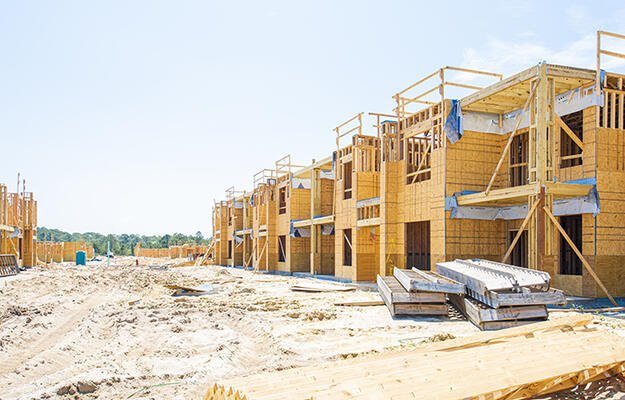
Police Budget Increases Are Linked to Local Housing Market Growth and Declines in Social Service Spending
- Title:
-
Governing Through Police? Housing Market Reliance, Welfare Retrenchment, and Police Budgeting in an Era of Declining Crime
- Author:
-
Brenden Beck and Adam Goldstein
- Source:
- Publication Date:
-
2017
Though crime rates have substantially declined since their peak in the mid-1990s, local policing budgets across the United States continued to grow. This inverse trend inspired researchers Brenden Beck and Adam Goldstein to explore the relationship between policing and systems other than the penal system, including the economy, housing values, and social service policies. In this 2017 study, Beck and Goldstein analyzed 171 cities’ police expenditures between 1992 and 2010 to test two possible explanations for unabated growth in local police spending: that increasing social and economic value of residential real estate drove expanded policing to protect and grow property values and that localities, encouraged by social control, expanded policing instead of funding social services.
Using police and social expenditure data from the Annual Survey of State and Local Government Finances, housing price growth data from the Federal Housing Finance Administration, and mortgage origination data from the Home Mortgage Disclosure Act dataset, the authors analyzed the connection between spending on policing, the strength of local housing markets, and local spending on social services. Beck and Goldstein omitted local capital expenditures from their analysis to better reflect short-term decisionmaking and adjusted for inflation. As bureaucratic budgeting often uses the previous year’s budget to create the present year’s, the authors included lagged measures to capture how previous expenditures will likely have a causal effect on future expenditures. Importantly, this study did not seek to explore whether police expenditures caused social welfare retrenchment but whether increased policing was intended to compensate for diminished social service spending.
Beck and Goldstein controlled for local crime rates using the Federal Bureau of Investigation’s annual Uniform Crime Reports. They noted that these reports’ measures are highly susceptible to police decisions and could reflect enforcement priorities rather than actual crime occurrences. The authors also controlled for fiscal variables (a city’s total revenue and total taxes collected), local economic conditions (unemployment rate and share of families in poverty), and homeownership rates. Past research shows that racial and ethnic minorities’ population representation is one of the most consistent and strong predictors of police budget. To acknowledge this, Beck and Goldstein also analyzed the relationship between the population share of the demographics most targeted by police, Black and Hispanic[1] boys and men ages 15 to 29, and police budgets.
Key findings
- Increasing housing prices and mortgage originations are associated with subsequent growth in a city’s police expenditures. The average city in the study saw its mortgage originations increase by 84 percent between 1997 and 2006, which corresponded with a 2.5 percent increase in police expenditures. The housing price index increased by 62 points in the average city between 1992 and 2006, which was associated with a 12.5 percent increase in police expenditures over that period.
- Cities with declining social service spending experienced increased investment in local law enforcement. A 1 percent decrease in social spending was associated with a 0.04 percent increase in police spending.
- Findings strongly support other research that Black and Hispanic people, especially young men, are perceived as a threat that influences police funding. A 1 percent increase in a locality’s young Hispanic male population was associated with a 12 percent increase in its police budget and a 1 percent increase in the young Black male population was associated with an 11 percent police funding increase.
- The steady growth of police budgets and influence are linked to broader economic and governance changes, including the growing residential real estate market.
- Results showed that many cities spent more on police when tax revenue shrunk.
Research and policy implications
- When analyzing the growth of policing and other carceral institutions, researchers and policymakers should continue to consider economic and governance shifts in other domains, such as housing and social services.
- Discussions of police-related policies should accurately portray policing as a system of social control with objectives ranging beyond “crime control.” This research suggests that politicians and policymakers increasingly used policing beyond “crime control” to influence community appearance, property values, and social service access (or lack thereof).
- The finding that police budgets grew when tax revenue shrunk requires further research, and is potentially consistent with recent evidence of “substitution budgeting”, where cities use police to generate revenue through fines and forfeitures when tax receipts are low. The authors point to Ruth Wilson Gilmore’s work that shows that amid popular anti-tax sentiment, fines can be a politically viable source of revenue.
[1] In alignment with the terminology used by the authors of this study, the Housing Matters editorial team uses the term “Hispanic” here to refer to people of Latin American origin. We recognize that the term “Latinx” is more inclusive of the way this group may self-identify. Housing Matters strives to avoid language that is exclusive and will always attempt to explain the editorial rationale behind the labeling of certain groups.
Photo by Glenn Highcove/Shutterstock


